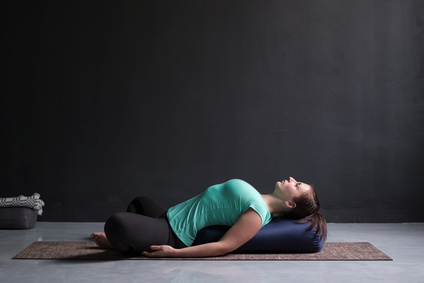In these unprecedented times, its likely your stress levels have increased significantly; I know mine certainly have.
Stress presents differently for different people.
With the ongoing pandemic we’re all facing, that can compound the effect of these symptoms. Aside from the current state of the world, it’s not possible to live completely stress-free (in fact, some level of stress is helpful and maybe even healthy). It’s important to be aware of your own body and own moods for signs of increased stress levels so you can choose the most appropriate management techniques.
What is Stress?
Though there are many negative connotations around “stress”, it’s not necessarily a bad thing. Stress is the body’s response to a harmful situation – also called the “fight-or-flight” response.
During this response, your heart rate and blood pressure rise, your breath gets faster and your muscles tighten. A little bit of stress is ok – this response allows the body to protect itself. However, when the stress response is persistent for prolonged periods, it can lead to some unpleasant symptoms and in more severe cases, some more serious conditions.
Physical Symptoms of Stress
- Low energy
- Headaches
- Upset stomach – feeling nauseated
- Chest pain
- Tense muscles or increased pains
- Difficulty sleeping or excessive sleeping
- Teeth grinding
Emotional Symptoms of Stress
- Low mood
- Anxiousness
- Increased irritability
- Feeling overwhelmed
- Decreased focus or motivation
- Difficulty with memory or concentration

What can we do to take back some control and manage some of our stress levels?
Stress Management Techniques
- Schedules/boundaries: whether you’ve recently found yourself working from home or maybe out of a job, create a clear schedule/routine to follow each day. Designate time specifically for work, exercise, cleaning, cooking, free time etc. so that your day is not just one endless block of work or chores.
- Get a good night’s sleep: don’t underestimate the importance of sleep! It allows your body to recover and helps keep your mood up. Try to make sure you are going to sleep and waking up at relatively the same time each day.
- Take breaks: again, it’s easy to get into a state where all you’re doing is work or chores so recognize when that is becoming too much and take a break.Distract yourself with a fun video, a jigsaw puzzle or read a good book or article. Maybe take this opportunity to start a hobby or learn a new skill you’ve always wanted to pick up.
- Diet: this is one I need to remind myself of constantly. It’s easy to fall into excessive snacking habits when we’re at any moment just steps away from our kitchens. Try and make healthy snack options or decrease your sugar intake. It’s ok to indulge occasionally as long as it’s the exception not the norm.
- Exercise: as physiotherapists, we advocate movement all. The. Time. Take a socially distant walk in your neighborhood. Play a sport in the backyard with your kids. Go up and down the stairs in your house or your apartment building (use gloves and limit what you’re touching). Follow an at home exercise routine on YouTube.
- Meditation: see our blog post on meditation for a great guided meditation.
- Connect with loved ones: it has been repeated over and over in the last couple of weeks but finding time to have a conversation with people you love, and care about will make a positive impact on your mood.
- Breathe: I know, I know this sounds so simple but it’s my go-to technique for myself. Deep breathing increases the amount of oxygen sent to the brain and triggers a calming response – it decreases the heart rate and releases muscle tension. Try this exercise to help with your deep breathing:
- Sit or lie down in a comfortable position with one hand on your tummy and one hand on your chest.
- Take a deep inhale through your nose, allowing your belly to push your hand out, your chest should not move.
- Exhale slowly through your mouth (as if you’re blowing into a straw). Your exhale should be at least twice a long as your inhale. Use your belly hand to help push all the air out of your belly.
- Do this breathing 5 times.
- Don’t rush!! Take your time with each breath and keep your focus on breathing.

Experiment a little and find the most effective technique for yourself. Just as we don’t all experience stress the same way, we don’t all manage it the same way either. If your pain has been amplified during this time, we are here to help.
Our Physiotherapists can connect with you online (via video) to help empower you and help manage your pain. Contact us to see how we can help you. Most insurance providers have adapted and will cover virtual or “Telehealth” rehabilitation sessions with a Physiotherapist in Ontario.

